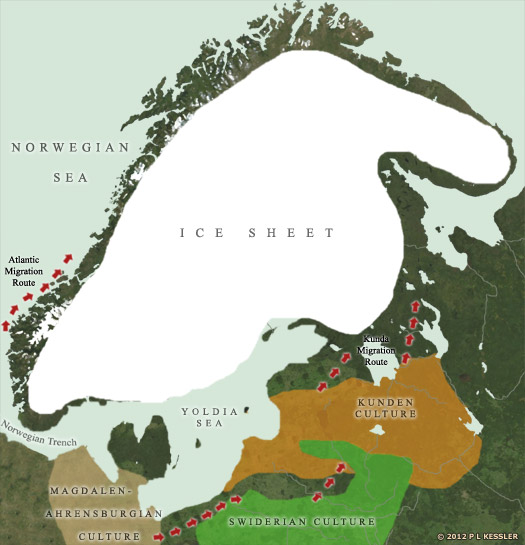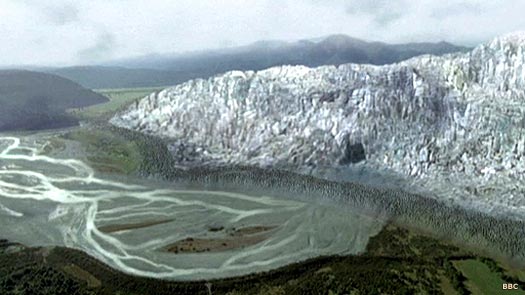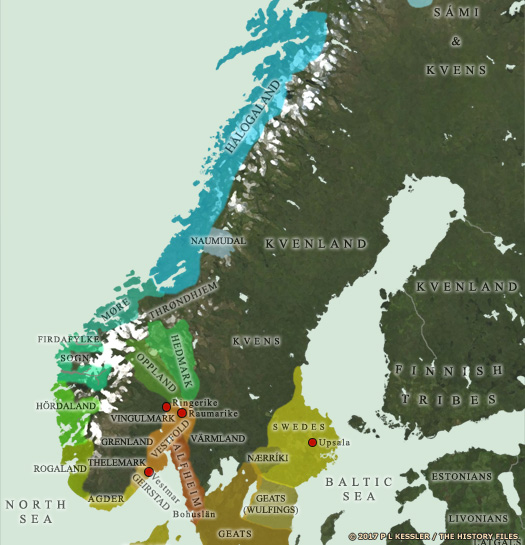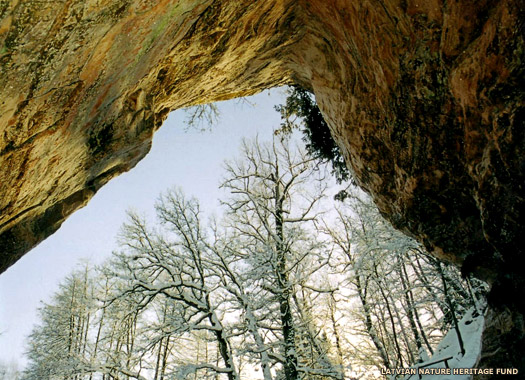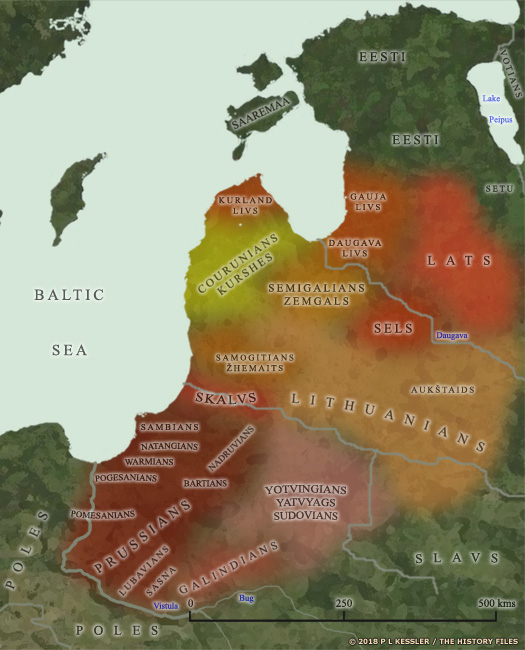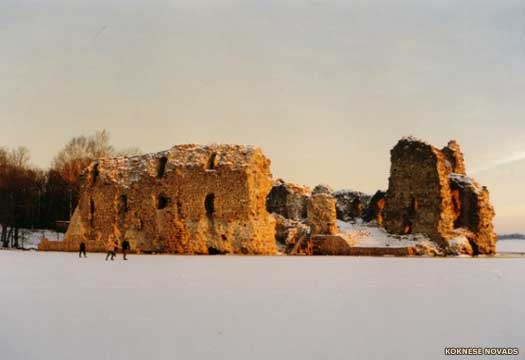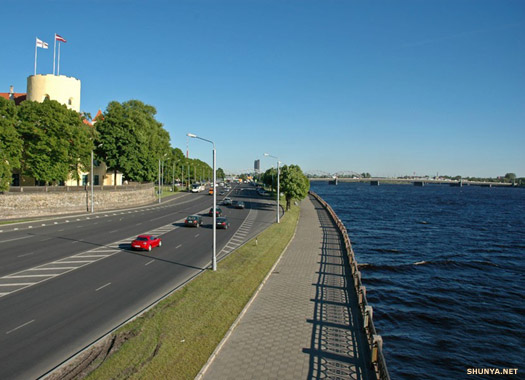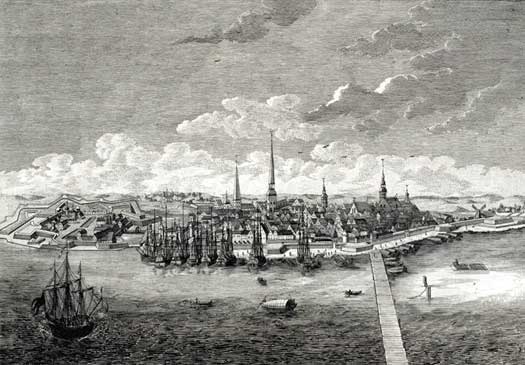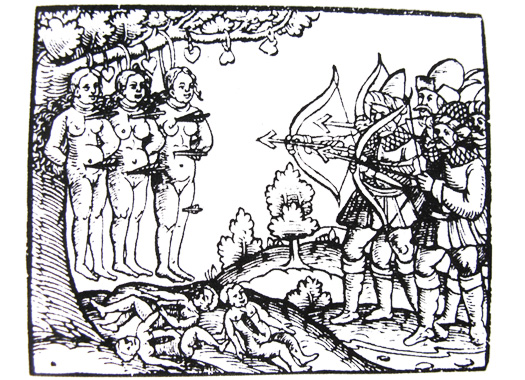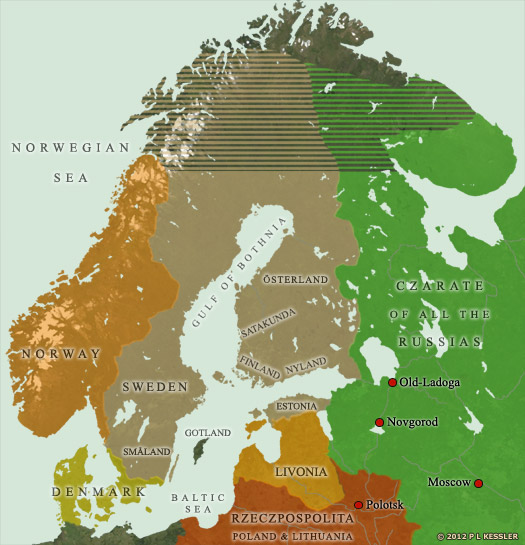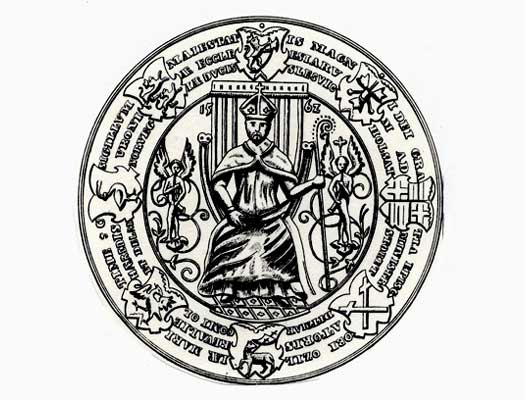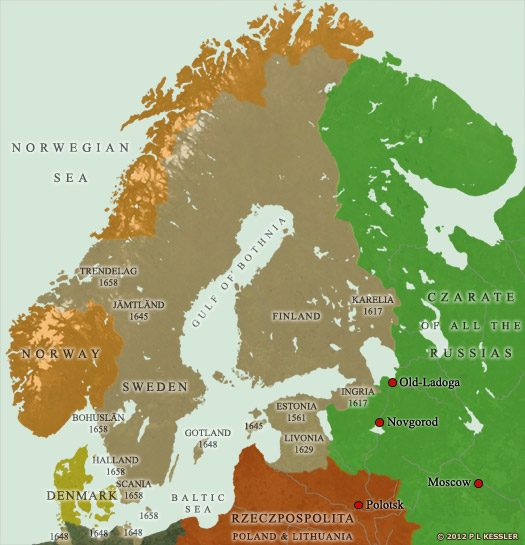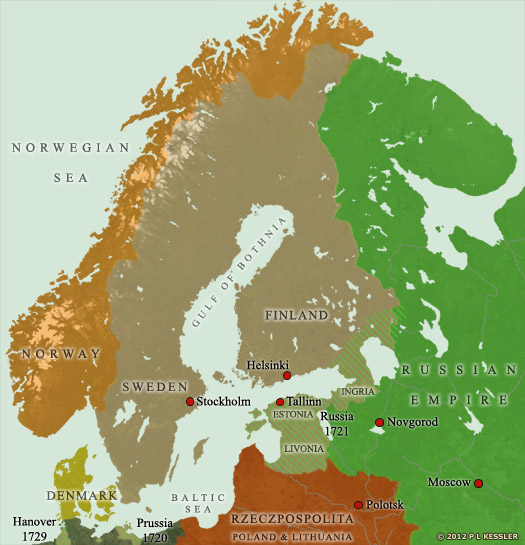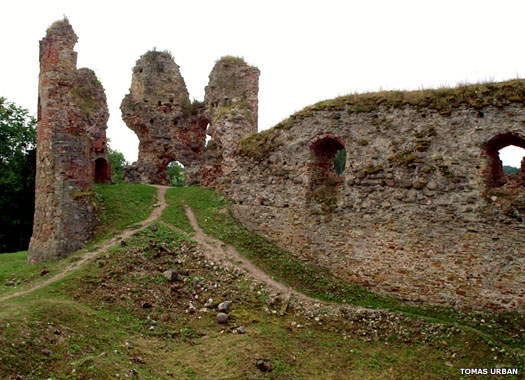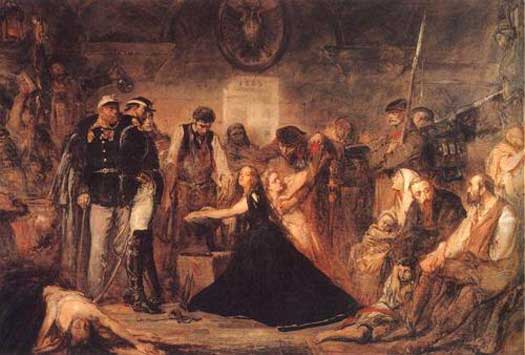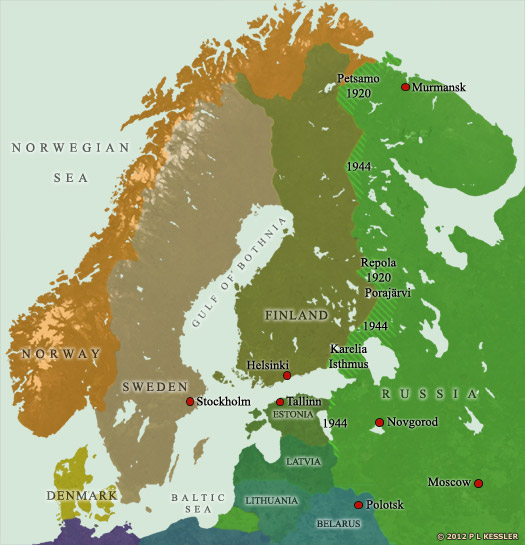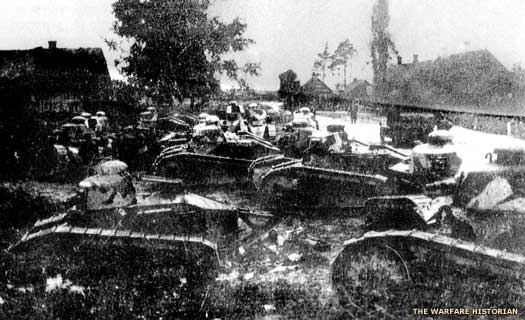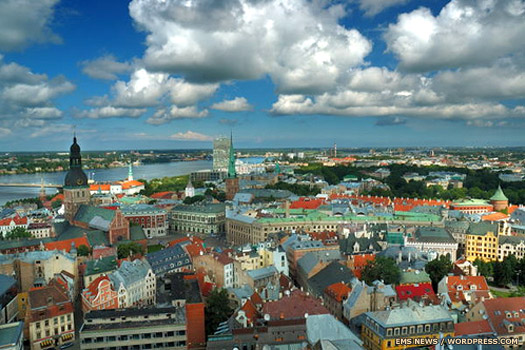
| LATVIANS Latvia
(Latvija) / Livonia (Balts) :
This Baltic country has historically also been known Lattonia, Lettonia, and Lettland, but for several hundred years it was submerged within a Germanic Crusader state called Livonia. Today the name of Livonia is still important as a description for areas of the region, even though it is no longer marked on any maps. Its core lands belong today to Latvia, which is a country in Northern Europe which shares its borders with Estonia to the north and Lithuania to the south - and both Russia and Belarus to the east and south-east. It is separated from Sweden in the west by the Baltic Sea, and the capital is Riga, a city founded by the very Germanic crusaders who conquered the territory during the twelfth and thirteenth centuries and founded the Livonia state.
The Latvian territory was first populated around 10,000 BC, as the ice sheet slowly retreated northwards. The Indo-European proto-Baltic ancestors of the Latvian people, or Lats, settled on the eastern coast of the Baltic Sea between around 3000-2500 BC, along with the Finno-Ugric peoples who had earlier settled in Estonia to the north (of whom the Livs were part, and all of whom belonged to a Uralic-speaking super-group). The Indo-European arrivals initially formed part of a general westwards migration until they split off and headed northwards. They further divided from the closely-related Slavic group around 2500 BC and went on to form the ancestors of the Latvians, Lithuanians and Old Prussians. These ancient Balts traded Latvia's renowned supplies of amber with ancient Greece and the Roman empire.
Various Baltic tribes could be distinguished by the tenth century AD. Presumably these had formed some time previously, probably centuries beforehand, as the Balts seemed to be relatively settled peoples. These tribes included the Lats (probably better known to the Germanic crusaders as Latgals or Latgallians), the Lets (Letti, Letten, or Lettigalians), the Livs (perhaps better known as Livonians), the Sels (also referred to as Selonians), and the Zemgals (or Žiemgaliai - the Zimegola of the Russian Primary Chronicle). The last of these were also referred to as Semigallians, this being nothing more than a more international variation of the Baltic name. They were situated between the Lithuanians and the Lats in what is now southern Latvia. The neighbouring Couronian Livonians (otherwise known as Kurshes) occupied the north-western corner of modern Latvia. The main group of Livs could be further divided into the Gauja Livonians and Daugava Livonians. The Couronian, Selian, and Semigallian languages disappeared between 1400 and 1600, either being Lettonised or Lithuanised. Other eastern Baltic languages or dialects became extinct in the proto-historic or early historic period and are not preserved in written sources. Today only the Lettish and Lithuanian languages survive.
(Additional information by Leitgiris Living History Club, from The History of the Baltic Countries, Zigmantas Kiaupa, Ain Mäesalu, Ago Pajur, & Gvido Straube (Eds, Estonia 2008), from The Horse, the Wheel, and Language: How Bronze-Age Riders from the Eurasian Steppes Shaped the Modern World, David W Anthony, from The Russian Primary Chronicle (Laurentian Text), Samuel Hazzard Cross & Olgerd P Sherbowitz-Wetzor (Eds and translators, Mediaeval Academy of America), and from External Links: The Balts, Marija Gimbutas (1963, previously available online thanks to Gabriella at Vaidilute, but still available as a PDF - click or tap on link to download or access it), and Leitgiris.)
10,000 BC :
The glacial ice sheet retreats from the territory that will later form Latvia. The retreat is slow but constant, so that the region is entirely free of the ice sheet by about 9,500 BC. Lakes and valleys have been formed by the melt water, and the landscape is littered with heaps of gravel and sand-layered hills which have been pushed up by the glacier, along with boulders from the Scandinavian mountain ridges. Areas of coastal Latvia remain under the waters of the Baltic ice lake (the Yoldia Sea, the modern Baltic Sea), and a severe sub-Arctic climate prevails, making the spread of the first lichen, dwarf birch, and dwarf willow a slow process. The first hunters probably arrive within a millennium, following the last of the mammoths.
The retreat of the glacial ice sheet allowed first plants and then animals to migrate into the region, closely followed by the first hunter-gatherers, while the map above shows the approximate location of the ice sheet at this time 9000s BC :
By this date, Estonia, Finland, Latvia, Lithuania, and Prussia are settled by pre-Baltic hunter-gather tribes which all share the same cultural traces. They belong to two groups, one being the regionally-dominant Baltic Kunda culture, which is a development of the earlier Swiderian culture located to the south. The other is the Magdalen-Ahrensburg culture located in north-western Germany and Denmark, which probably enriches the Kunda culture.
Traditional scholarly belief has these hunter-gatherers migrating from the southern Baltics and further east, but a more recent idea suggests that while this is correct for the Baltics, Finland and northern Scandinavia are also first inhabited via the sweeping grass plains of Doggerland (now under the North Sea). Settlements along the River Daugava in modern Latvia testify to the fact that hunter-gathers are present in the region from the end of the ninth millennium.
c.8200 BC :
The waters of the ice-damned Baltic Ice Lake penetrate the region of the Billingen Mountains to form a link with the Atlantic Ocean. As a result, the Yoldia Sea drops rapidly, by about thirty metres. This retreat is so sudden, and probably has such a profound effect on the early inhabitants of the Baltic area, that it is known as the Billingen Catastrophe.
8000 - 7100 BC :
The Preboreal period sees the climate become significantly warmer in the Baltics. Birch and pine forests start to spread, and elk, bears, beavers, and various species of water birds migrate into the region from the south.
7100 - 5800 BC :
The Boreal period sees the climate continue to warm and become drier. Pine forests decrease, allowing deciduous trees to gain a firmer foothold and become prevalent. The animal population thrives, with red deer, roe deer, and hares increasing considerably.
5800 - 2800 BC :
The Atlantic period is characterised by a climate that is warmer than that of the present day. New species migrate into the Baltic region, including Baltic aurochs and wild boar, which inhabit forests of broad-leaved trees. Water chestnuts grow in the many lakes, and the bountiful life draws hunter-gatherers into the area. The warmness fails towards the end of this period, causing the disappearance of aurochs, wild horses, and water chestnuts.
c.3000 BC :
The Comb Ceramic culture reaches Prussia, Latvia, Estonia and Finland as new peoples arrive from the east, almost certainly the Finno-Ugric tribes who form the later core of Finland and Estonia (Estonians, Finns, Livs, Karelians, Wots, Weps, and Ingrians). The early Neolithic culture seems to form on the basis of the previous Mesolithic cultures, but uses a greater variety of bone, antler and stone implements, and employs boring, drilling, and abrading skills.
c.2500 BC :
The Corded Ware culture (or Boat Axe culture) arrives in southern Finland, along the coastal regions, as well as in Estonia, Latvia, Lithuania, Belarus, western Russia, Poland, northern Germany, Denmark, and southern Sweden. These new, probably early Indo-European, arrivals also have some domesticated animals and bring agriculture with them, although they continue to exist alongside universally-practised hunter-gather activities for some time. Both of these groups - foragers and farmers - form the proto-Baltic ancestors of the later Latvians and Lithuanians.
1st century AD :
The Roman Iron Age is a relatively peaceful period in Estonia and Latvia. Only a few hill forts of later periods have yielded some finds which date to this period, suggesting the few strongholds were used rarely and only in times of need.
The ancestors of the Galindians, Lets, Lithuanians, Natangians, Sambians, and Semigallians continue throughout the entire Early Iron Age to build stone cists in which they place urns of a family or kin, covering them with an earth barrow secured by a stone pavement from above and stone rings around. While available, Middle and Late La Tène fibulae are also imported and imitated. In marked contrast to Celtic and Germanic graves, however, weapons are extremely rare in Baltic graves. The inland Prussian tribes seem to live a rather peaceful life.
Other Baltic tribes are now developing their own distinctive burial rites. Sudovians build stone barrows, Couronians place their dead in stone circles or rectangular walls, while their neighbours in central Lithuania use flat graves supporting tree-trunk coffins with stones. The differentiation of local burial rites from around this time permits modern scholars the chance of perceiving tribal borders between the various Baltic tribes, which thereafter remain unchanged in this region until the coming of the Germans. Until then, there is no evidence of migrations, shifts of population, or invasions of the Baltic lands by foreign peoples.
5th century :
In the first half of the fifth century, there is some evidence of a new wave of invaders in Lithuania. There is every reason to believe that nomadic hordes (either the Huns or a fringe group related to or vassals of them) carry out raids on the forts of southern and eastern Lithuania. Although Prussian tribes have returned westwards to reoccupy some of the lands previously lost to East Germanic tribes, they start to come under pressure from Slavs who are now migrating into what is now central Poland.
To the east, however, it is still largely a case of Balts integrating with Finno-Ugric tribes. Many barrows in these areas yield purely Baltic finds of the Let type. These date from the fifth to twelfth centuries AD. Even to the south of Smolensk, Moscow, and Kaluga, along the tributaries of the River Zhizdra and upper Desna, a number of excavated barrow cemeteries and hill forts of the Baltic type yield finds which are related or identical to those in eastern Latvia, and which can be dated up to the twelfth century. The archaeological finds also fully confirm a dating up to the twelfth century for the remnants of those Balts who live to the west of Moscow, in the area between Smolensk, Kaluga and Brjansk, the Galindians.
7th century :
The Baltic tribes enjoy what could be termed a 'second golden age', buoyed by rapidly-expanding Viking trade networks which are reaching far the west and deep into Eastern Europe to establish contacts with the Byzantine empire at Constantinople. It's not all peaceful trade, however. The Vikings see the Balts as a viable target for raids, little realising at first how good are the Balts at defending their territories and even striking back at Viking targets.
The numerous Baltic tribes are currently ruled by powerful chieftains and landlords, a system which remains in place until the beginning of locally-recorded history in the region. Among the Baltic tribes the Prussians and Couronians continue to play leading roles. In the previous century or so, the Lets have expanded their territory to cover much of northern Latvia, replacing the previously dominant Finno-Ugric tribes there, the early Estonians.
900 :
Four Baltic tribal cultures have developed by this time: Couronians or Kurshes, Lats or Latgallians, Sels or Selonians, and Semigallians (who are for a long time troublesome border tribes between later Livonia and northern Lithuania). A Danish Viking onslaught had been launched in 870 against 'Semigalia', showing that they were also troublesome quite a bit farther afield.
Gutmanala, close to Riga, was an ancient cult site in use right up to the nineteenth century, while above that is a map showing a host of the many petty Norwegian and Swedish kingdoms in eighth and ninth century Scandinavia 1106 :
The Lats, Livs and neighbouring Semigallians have conflicting interests with the Rus principalities of Polotsk, Pskov, and Novgorod, with the latter two making a number of raids on north-eastern Latvia. The first major setback to Rus expansionism is the disastrous defeat of the army led by the sons of Prince Vseslav of Polotsk against the Semigallians (Zimegola, according to the Russian Primary Chronicle). According to the chronicle, Rus losses amount to 9,000 men.
1170 :
Denmark is fast rising as a great military and merchant power, and it is in its interest to end the occasional Estonian and Couronian pirate attacks that threaten its Baltic trade (these are the Eastern Vikings, from Ösel - Saaremaa, the richest area of Estonia - and the later province of Kurland, respectively). To that end, a Danish fleets now makes an attack against Estonia.
1180 :
German Christian missionaries arrive, converting small numbers of Balts and probably establishing nascent congregations. On the whole the Balts appear reluctant to convert, perhaps fervently so, which means German Crusaders are sent to the Lats and their neighbouring tribes to convert the pagan population - a pretext for a grab for land and resources which is supported by the Pope. They are strongly opposed, although extremely little is known about the Liv native leaders who lead that opposition.
By about AD 1000 the final locations of the Baltic tribes were well known by the Germans who were beginning their attempts to subdue and control them, although the work would take a few centuries to complete and the Lithuanians would never be conquered by them late 1100s on :
The Balts have come a long way towards producing contemporarily-modern feudal states. The largest or most powerful castle with a town has become the military and administrative centre for the tribal district. Five 'states' had already existed in the Couronian lands to be chronicled in the 870s by Rimbert. Now, at the beginning of the thirteenth century there are eight 'states' or districts with their own centres, each of which has several villages ('castellatura'). A similar pattern of separate districts pertains for all the other Baltic tribes. The more powerful feudal 'kings' extend their rule over two, three, four, or more districts. These 'kings' or chieftains possess the largest of all the castles. The most influential of them are called 'rex' or 'dux' or 'princeps' by chroniclers. The chronicles enumerate the names of the chieftains and even those of their subordinates. Power and land ownership are inherited.
The hierarchical structure of chieftainship is illustrated by the Chronicle of Volynia, which relates how twenty-one Lithuanian dukes come to sign the treaty of 1219 between Lithuania and the Rus of Halych-Volynia. Of these, five - the most powerful amongst their number - are 'grand dukes', while the other sixteen are dukes of minor importance. From this it may be deduced that Lithuania is now ruled by a confederation of the most powerful chieftains. It is quite possible that such a system of government is also in existence in the other Baltic states and has been for some time.
late 1100s :
Kauppo : Liv chieftain.
c.1190s - 1200 :
Vesike : Liv/Let chieftain in Metzepole (modern Vidzeme).
c.1200s - 1214 :
Tālivaldis / Talivaldis : Liv/Let chieftain in Talva (Letgale).
The ruler of the district of Beverina in 'Lettigallia' at the beginning of the thirteenth century is Tālivaldis. He is described as being a rich man with much silver. His three sons are also rich, and possess many lands.
fl c.1200s :
Viestarts : Semigallian chieftain in Tervete (south-west of Riga).
Viestarts is the lord of Tervete in western Semigallia. He is classed as a 'dux' and 'maior natus' and under his rule are all the lands of western Semigallia.
The ruler of the district of Beverina in Lettigallia at the beginning of the thirteenth century was Tālivaldis, who is described as a rich man having much silver; his three sons were rich also, and possessed many lands. The hierarchical structure of chieftainship is illustrated by the chronicle of Volynia,20 which tells how 21 Lithuanian dukes came to sign the treaty of 1219 between Lithuania and the Rus' of Halich-Vladimir. Of these, five — the most powerful ones — were “grand dukes,” the other 16 dukes of minor importance. From this we may deduce that Lithuania at that time was ruled by a confederation of the most powerful chieftains. It is quite possible that such a system
? - 1244 :
Vyachko : Lat chieftain in Varka.
Principality
of Koknese :
Following the death of Vseslav of Polotsk, the greater part of the principality broke up into smaller states which included the principalities of Druck, Jersika, Koknese, Minsk, and Vitebsk. Koknese was one of the smallest principalities, situated on the right bank of the River Daugava, a Lat and Sel settlement which was perhaps more locally known as Kukenois (now in southern-central Latvia).
1180s - 1206 :
Prince Vyachko / Vetseka / Vetseke : Prince of Koknese.
1205 :
According to the (German) sources, Vetseka gives half of his territory to Albert, bishop of Riga, in return for protection against the duchy of Samogitia and the principality of Polotsk. During a raid by the Livonian Knights he is captured and delivered in chains to Riga, where the bishop sets him free. Returning to his capital, Vetseka burns down both it and his fortress and retreats to Novgorod where he dies the following year.
The modern ruins of Koknese Castle which was built under the orders of Prince-Bishop Albert in 1209 as a symbol of his domination of the region 1209 :
By this time, Koknese has been taken over by the Livonian Knights.
Principality
of Gersik :
It was around this time that a short-lived Lat principality which was subject to Polotsk appeared in Gersik, or Gersike, situated on the right bank of the Daugava around 150 kilometres south of Riga (and which no longer exists). It had only two rulers before being conquered by the Livonian Knights.
fl 1180s - 1190s :
Vasilko : Lat chief of Gersik.
1186 - 1215 :
Vsevolod : Lat chief of Gersik.
Prince-Bishops
of Livonia :
While the Danes were securing all of North Estonia by force, the rest of the Baltics was undergoing the same process from the south. What is now Estonia and Latvia quickly came to be governed by German prince-bishops in Courland, Dorpat, Ösel-Wiek and, governing the heart of later Latvia, the prince-bishop of Riga. The Livonian Order of Knights conquered the rest of what is now Latvia and central Estonia. The captured territory between Danish Estonia and Lithuania became known as Livonia. The prince-bishops of Livonia ruled their central section of Livonia first from Üxküll (Uexküll), then from Riga, and were appointed by the archbishop of Bremen.
During this period, important ethnic changes took place among the Baltic peoples. Within the confines of Livonia, the fusion of the kindred Couronians, Lats, and Sels into one people took place, emerging as the Latvians of the future. They took that name from the most numerous of the Baltic peoples in Livonia, the Lats. The assimilation of the Finno-Ugric people, the Livs or Livonians, also began at this time, although they managed to leave their mark on Latvian language and culture.
1186 - 1196 :
Meinhard : First appointed prince-bishop of Livonia.
1196 - 1198 :
Berthold : Abbot of Cistercian Lockum Monastery, Hanover.
1198 :
A large fleet of German crusaders and peasants arrives to increase the size of the colonial settlements in Livonia. Taking the crusaders inland to face a gathering army of Liv natives, Berthold defeats them but is killed at the end of the battle. Bishop Albert is appointed his successor, and he goes on to complete the task of Christianising the Livs.
The River Daugava was an important border between the Lats and Lithuanians at this time 1199 - 1229 :
Albert of Buxhoeveden : Founded Riga. First grand master of the Livonian Knights.
c.1200 :
The Chronicle of Henry of Livonia describes a clearly non-Slavic tribe called the Vindi (German Winden, English Wends). They live in Courland and Livonia, clearly the northernmost remnants of the Belgic Venedi. The tribe's name is preserved in the River Windau (in Latvian this is the Venta), which has the town of Windau (the Latvian Ventspils) at its mouth. It is also preserved in Wenden, the old name for the town of Cēsis in Livonia.
1201 :
Bishop Albert of Germany lands with his followers at the mouth of the River Väina and founds the colonial settlement town of Riga. Europeans are becoming hungry for land at this point, and others follow the lead set by the German bishops in invading the pagan Baltic territories.
1202 :
Bishop Albert founds the Livonian Order of Knights for the purposes of conquest and Christianisation in the Baltics. This marks the beginning of the Northern Crusade.
1205 :
According to the (German) sources, Prince Vetseka of Koknese gives half of his territory to Bishop Albert in return for protection against the duchy of Samogitia and the principality of Polotsk. During a raid by the Livonian Knights he is captured and delivered in chains to Riga, where the bishop sets him free.
1207 :
The bishop of Riga assumes the style 'prince of Livonia', and makes Livonia part of the Holy Roman empire, although this is not formalised until 1 December 1225. Part of the bishop's territories are given as a fief to his standing army, the Livonian Knights. The bishop also moves his headquarters from Üxküll to Riga.
1209 :
By this time, Koknese has been taken over by the Livonian Knights and the sovereignty of Polotsk is finally revoked in 1215. The Knights control the town until its transference to the bishopric of Riga in 1238.
1211 :
Christianity now has effective control of the Lats, with them being governed by German bishops and the Livonian Knights. Bishop Albert oversees the building of Riga's Dome Cathedral. However, in the same year, the 'Vikings' of Saaremaa attack Turaida Castle, a stronghold of the Livs on the River Koiva. The Livs have been cooperating with the 'traitorous' and constantly encroaching Germans from Riga, both by sea as well as on the river.
1215 :
The small Lat principality of Gersik is conquered by the Livonian Knights.
1220 - 1226 :
Despite the Danes having conquered Lindanäs in northern Estonia, their control certainly does not extend to western Estonia. Neither does that of Livonia to any great extent, as the fiercely independent and powerful 'Vikings' of Saaremaa are still a force to be reckoned with. Now they cross the Moonsund with a great host and liberate Rotalia County in western Estonia from the people of Svealand, who have conquered Lihula Castle. How long they remain there is unclear, but the fight against the Swedes continues in 1226 when the men of Saaremaa sail back home from Svealand with a great deal of loot and a large number of prisoners.
1227 :
The Danes are temporarily eclipsed in North Estonia when the Livonian Knights conquer all of their territory from the heartland of their powerbase in central Livonia. In 1238, North Estonia (Harria and Vironia) is returned under the terms of the Treaty of Stensby, which is mediated by the Pope.
The role of the Estonian elders on Ösel-Wiek is effectively terminated when that island is finally conquered. Ösel-Wiek is established as one of four bishoprics in Livonia. The territory is divided between the archbishop of Riga, the Livonian Knights, and the city of Riga. Over the course of the next few years, the city of Riga loses its domain and the island remains under the governance of two landlords - the bishop of Saare-Lääne (Ösel-Wiek) and the Livonian Order.
1236 :
As soon as the Germans had began building their castles along the River Nemunas, they had met well-organised resistance from the Lithuanians. The Samogitians and Semigallians (situated between the Lithuanians and the Lats in what is now southern Latvia) decimate the Livonian Knights at the Battle of Schaulen (Saule or Šiauliai), thereby allowing the Lithuanians to consolidate their territories and form a single state.
1238 :
North Estonia (Harria and Vironia) is returned to the Danes under the terms of the Treaty of Stensby, which is mediated by the Pope. The Knights keep Jerwia and hand over the former principality of Koknese, on the right bank of the River Daugava which borders the Lithuanians, to the archbishop of Riga.
1229 - 1231 :
Albert Suerbeer : Appointed but not recognised.
1229 :
Albert Suerbeer is appointed to the position by the archbishop of Bremen, but the canons of Riga refuse to recognise him, preferring to elect their own candidate in Nikolaus von Nauen. He is confirmed by the Pope in 1231. Albert serves in Ireland for five years before being recalled to Germany and then sent back to Livonia to serve as archbishop of Riga.
1229 - 1253 :
Nikolaus von Nauen
Archbishopric
of Riga / Prince-Bishops of Livonia :
The bishopric of Livonia was soon raised to an archbishopric, as the new order in the Baltics cemented its rule over the native Ests (Estonians), Livs (Livonians, modern western Latvians and southern Estonians) and Lats (or Latgalians, modern eastern Latvia). The position was a secular one with a capital at Riga, although the initial intention had been to set up a pro-Papal ecclesiastical state. That hope was destroyed in North Estonia in 1233, when the Danes defeated an attempt to achieve it.
1253 - 1273 :
Albert Suerbeer : Raised to archbishop in 1255.
1259 :
At the end of a two year truce, the eager Samogitians inflict a defeat on the Livonian Knights at the Battle of Skuodas under the leadership of Treniota, nephew of Mindaugas of the Lithuanian kingdom. Their success encourages the Semigallians to rebel against the rule of the Knights.
1260 :
The Livonian Knights, along with the Teutonic Knights, are abandoned by their Estonian and Couronian vassals and defeated again, this time severely, at the Battle of Durbe in Livonia by the Samogitians. As a result, numerous rebellions break out against the Teutonic Knights all across the Baltics, including military expeditions by the Lithuanians, and it takes around thirty years before complete control is regained.
1273 - 1284 :
Johannes I von Lune
1282 :
The towns of Riga, Cesis, Limbaži, Koknese and Valmiera in Livonia, and Tartu within the bishopric of Dorpat, are included in the Hanseatic League of trading towns in Northern Europe.
The inclusion of Riga in the Hanseatic League in 1282 would have accelerated its development as an important trading town with vital seaward connections to Europe 1285 - 1294 :
Johannes II von Vechten
1290 - 1307 :
The principality of Polotsk is controlled by the archbishopric, before the brother of Grand Duke Gediminas of Lithuania secures the throne.
1294 - 1300 :
Johannes III von Schwerin
1300 - 1302 :
Isarnus Tacconi : Archbishop of Lund (1302-1310).
1303 - 1310 :
Jens Grand : Archbishop of Lund (1289-1302).
1304 - 1310 :
Jens Grand's occupation of the title is in name only as he never enters Riga. Instead, day-to-day duties are handled by Friedrich von Pernstein, who is appointed the succeeding archbishop when Jens Grand becomes prince-bishop of Bremen in 1310-1327.
1304 - 1341 :
Friedrich von Pernstein
1326 :
Peter von Dusburg writes that in the Prussian province of Nadruva, in the place called Romuva, there is a powerful priest named Krivė, whom the people regarded as pope, and whose dominion extends not only over Nadruva, but also over Couronia, Lithuania, and Semigallia. The only such 'pope' known to recorded history, Krivė is highly respected by the kings, nobility and common people, and his rule covers almost all of the Baltic lands during the wars against the Teutonic Knights.
1341 - 1347 :
Engelbert von Dolen
1348 - 1369 :
Bromhold von Vyffhusen
1370 - 1374 :
Siegfried Blomberg
1374 - 1393 :
Johannes IV von Sinten
1379 :
Bishop Dietrich of Dorpat hates the Livonian Knights with some intensity, so much so that he forms a coalition against the Knights with Lithuania, Mecklenburg and the notorious Victual Brothers who are Baltic pirates. The Knights invade the bishopric but achieve no success. In the end their lack of results removes from them the right to demand military service from the Livonian bishops.
1393 - 1418 :
Johannes V von Wallenrodt
1410 :
The Battle of Tannenberg sees Polish and Lithuanian forces under Polish leadership halt the eastward expansion of the Teutonic Knights. After this defeat, the Livonian Order begins to weaken and disintegrate.
1418 - 1424 :
Johannes VI Ambundi
1424 - 1448 :
Henning Scharpenberg
1441 :
One of the merchants guilds in Tallinn erects Estonia's (and the world's) first Christmas tree (sixty-nine years before Riga does the same). Merchants and single women dance around the tree, after which it is set alight and all the evidence is disposed of. According to records, Riga's first Christmas tree in 1510 isn't even a real tree, just a wooden pyramid decorated with flowers, fruits and toys.
1448 - 1479 :
Silvester Stodewescher
1479 - 1484 :
The seat remains vacant. Information on two of the last archbishops to be subsequently appointed, Linde and Blankenfeld, is contradictory, and due to deflation no coins are minted during their terms of office.
1484 - 1509 :
Michael Hildebrand
1501 - 1503 :
As the Orthodox Rus border Livonia to the east, the Livonian Knights can claim to be holding an outpost of Catholic Europe, and while they are more than interested in trade with the Rus, the expansion of Moscow up to Livonia's borders at this time complicates matters. War between Moscow and the Knights breaks out in 1501. Livonians, uniting their forces under the leadership of the Knights, defeat Moscow's army near Lake Smolensk in 1502, and a truce is concluded the following year which lasts until 1558. The Russians are prevented from expanding westwards to the Baltic coast.
1509 - 1524 :
Jasper Linde
1524 - 1527 :
Johannes VII Blankenfeld : Already bishop of Reval (1514), and Dorpat (1518).
1525 :
The German Lutheran reformation reaches Livonia and Dorpat, accompanied by a violent stripping of the churches. This movement weakens the Catholic church in Old Livonia and North Estonia, making it more likely that one or more of the neighbouring centralised states will attempt to seize power. Moscow, Poland, Lithuania, and Sweden are all eager to do just that.
1528 - 1539 :
Thomas Schoning
1539 - 1563 :
Wilhelm von Brandenburg : Grandson of Albert III of Brandenburg.
1558 - 1561 :
Following Russian provocation and the conquest of Dorpat, the Livonian Wars erupt in the Baltic States, ripping apart the old order in Livonia and North Estonia. The Livonian Knights and the archbishop of Riga seek help from Sigismund II of Poland-Lithuania, pawning five Order castles and two archbishopric castles together with their surrounding territory to help procure it. However, the army of the Livonian Knights is completely destroyed by the Russians at the Battle of Ergeme in 1560, and a year later, on 29 November, the master of the Order, Gotthard Kettler, acknowledges the supreme power of Sigismund II over all areas regarding the Order, including its territories, formally dissolving the Livonian Knights. The archbishop of Riga also accepts the treaty of dissolution, known as the Pacta Subiectionis.
Russian troops committed atrocities against the Livonian population, as shown in this print from 'Zeyttung' which was published in Nuremberg in 1561 Polish
Governors of Livonia :
Following the dissolution of the Livonian Knights in 1561, southern Estonia remained within Livonia which, along with the duchy of Courland, became part of Poland-Lithuania. Grand Duke Sigismund II of Lithuania took possession and became grand duke of Livonia in 1566. The city of Riga refused to accept the Pacta Subiectionis, although it was secularised in 1563 (and only restored in 1918 as the diocese of Riga). Instead Riga became a Free City until the end of the Livonian Wars in 1583, while Polish military governors controlled the rest of Livonia.
1559 - 1560 :
Jan Chodkiewicz
1559 - 1560 :
Jerzy Zenowicz : Ruled jointly. Last of the military governors.
1560 - 1561 :
Mikolaj Radziwilj : First Polish governor.
1561 - 1562? :
Mikolaj Radziwill : Administrator.
1562 - 1566 :
Gotthard Kettler : Duke of Courland & Semigallia.
1566 - 1578 :
Jan Chodkiewicz : Administrator.
1570 - 1578 :
Magnus of Livonia : Prince of Denmark. Titular 'king of Livonia'.
1570 - 1578 :
Magnus, bishop of Courland and of Reval, claims the title, 'king of Livonia', although his power is very limited. He is, however, supported by the Russian czar, Ivan the Terrible, who launches a new offensive in this decade, and reaches Riga and Tallinn. He does not manage to capture either town.
The failure of Magnus of Livonia to capture the territory he claimed probably would have made very little difference to most of the population, although the subsequent Swedish period was later viewed as a golden age, while above is a map of the Nordic countries and the western czarate after AD 1581 1578 :
Aleksander Chodkiewicz : Acting governor.
1578 - 1584 :
Mikolaj Radziwill : Second term of office.
1582 - 1583 :
An armistice agreement is concluded between the Russian czar and the Polish-Lithuanian kingdom proclaiming Livonia a possession of the latter. In 1583, Russia concludes a similar agreement with Sweden, acknowledging its supreme power in North Estonia.
1582 - 1588 :
Stanislaw Pekoslawski : Commissar.
1588 - 1598 :
The post is vacant, but the duties are administered by Jan Dymitr Solikowski, the commisar.
1588 - 1598 :
Jan Dymitr Solikowski : Commissar.
1598 :
Lew Sapieha : Commissar.
1598 - 1603 :
The post is vacant again, but the duties are administered by Jan Abramowicz, the governor of Dorpat province.
1598 - 1603 :
Jan Abramowicz / Abrahamowicz : Administrator.
1600 - 1605 :
The Swedish king initiates the First Polish-Swedish War by assembling troops in Tallinn in order to attack Poland-Lithuania's Livonia, but instead the army suffers significant losses at Cesis and Koknes. The Swedes are driven out of Livonia in 1601. Further attacks on Riga in 1604 and Courland in 1605 also fail, but the Swedish-Russian alliance diverts Polish efforts towards Moscow.
1603 - 1621 :
Jan Karol Chodkiewicz
1621 - 1629 :
Sweden captures Riga in 1621, and the First Polish-Swedish War ends with the Treaty of Altmark, which sees most of Poland-Lithuania's Livonia come under Swedish rule. It is probably during this period that many of the old German Crusader castles such as Helme Order Castle are destroyed. The remainder of Livonia, the eastern part of Livonia, named Latgallia, remains in Polish hands (Inflantia or the Inflanty Voivodeship, the principality of Livonia), and survives today as the Latgale region of Latvia.
Swedish
Governors-General of Livonia :
The First Polish-Swedish War ended with the Treaty of Altmark in 1629, which formalised the occupation of Poland-Lithuania's Livonia under Swedish rule as Swedish Livonia. In fact, parts of Livonia as far south as Riga had been in Swedish hands since 1621. Only the remainder of Livonian territory, the small eastern part of Livonia, named Latgallia, remained in Polish hands. In the Swedish territory, serfdom was eased and a network of schools was established for the peasantry. The country also retained its own diet, or parliament.
1622 - 1628 :
Jacob De la Gardie : Former governor of Swedish Estonia (1619).
1628 - 1629 :
Gustaf Evertsson Horn
1629 - 1633 :
Johan Skytte : Also governor-general of Ingria & Karelia.
1633 - 1634 :
Nils Assersson Mannersköld
1634 - 1643 :
Bengt Bengtsson Oxenstierna : Son of Gabriel Bengtsson Oxenstierna (1645). Also in Ingria.
1643 :
Hermann greve Wrangel : Former governor of Swedish Prussia (1632).
1644 :
Erik Eriksson Ryning
1645 - 1647 :
Gabriel Bengtsson Oxenstierna : Former governor of Estonia (1611) & Finland (1631).
1649 - 1651 :
Magnus Gabriel De la Gardie : Son of Jacob De la Gardie (1622).
1652 - 1653 :
Gustaf Evertsson Horn : Second term. Later governor of Ingria (1654) & Finland (1657).
1655 - 1657 :
Magnus Gabriel De la Gardie : Second term of office.
1655 - 1660 :
Seeing a golden opportunity following the Russian capture of large areas of Lithuania in 1654, Swedish troops enter the duchy of Courland, triggering the Second Polish-Swedish War. It ends when Livonia is officially ceded to Sweden following Poland-Lithuania's signing of the Treaty of Oliva.
During this period, Russian settlers who have seceded from the Orthodox church following the Great Schism migrate to the south-western shores of Lake Peipsi (now the eastern border of Estonia), forming small fishing communities along the lake's shore.
The Swedes had removed themselves from the Union of Kalmar with Denmark and Norway in 1523, and since that time had built up a Nordic empire of their own which now dominated the eastern lands and Baltic territories 1661 :
Axel Lillie / Lillje : Former governor of Pomerania (1652).
1662 - 1665 :
Bengt Oxenstierna : Second term of office.
1665 - 1671 :
Clas Åkesson Tott the Younger
1671 - 1674 :
Fabian von Fersen
1674 - 1686 :
Krister Klasson Horn af Åminne : Former governor of Ingria (1657).
1687 - 1695 :
Jacob Johan Hastfer
1695 - 1697 :
The country suffers a severe famine, known as the Great Famine, which leads to the death of almost a fifth of the entire Livonian population. The famine is theorised to be the result of climate change, and Livonia is not the only victim. Estonia and Finland also suffer large-scale death due to famine, all of which could perhaps be attributed to the Little Ice Age, a period of intense cooling across Europe that also regularly freezes the River Thames in London.
1696 - 1702 :
Erik Dahlberg : Former governor of Bremen-Verden (1693).
1700 :
Sweden fights Russia, Poland and Denmark in the Great Northern War, which is another attempt at empire building in the Baltic states by outside powers.
1702 - 1706 :
Carl Gustaf Frölich : Later governor of Finland (1735).
1706 - 1709 :
Adam Ludwig Lewenhaupt : Captured and detained by Russia until his death.
1708 - 1709 :
Adam Ludwig Lewenhaupt may have been appointed governor of Livonia on the strength of his victory at the Battle of Gemauerthof in 1705. Now he is ordered to march east with a supply column to support Charles' main invasion force in Russia. Lewenhaupt is engaged at the Battle of Lesnaya and is defeated and forced to abandon his supplies. In the following year he finally meets up with the king's army and is given command of the infantry at the Battle of Poltava, a disaster for Sweden, and the army's surrender at Perevolochna. Lewenhaupt is captured by the Russians and remains in Moscow until his death in 1719.
1709 :
Henrik Otto Albedyll
1709 - 1710 :
Niels Jonsson Stromberg af Clastorp : Former governor of Swedish Estonia.
1710 - 1721 :
Sweden is defeated at the end of the Great Northern War, and much of Livonia has been devastated by it, with castles and strongholds destroyed, farms laid waste, and peasants chased off the land. The victors, Russia, Poland and Denmark, divide the spoils with the Treaty of Nystad. Much of Livonia is handed to Russia, although it has already been occupied by Russian troops since 1710.
This map shows the Nordic borders following the conclusion of the Great Northern War in 1721, after which large swathes of eastern territory changed hands Russian
Governors of Livonia :
The captured territories, in Russian hands from 1710, were divided by the Russian empire into three Baltic Provinces: Courland, Estonia and Livonia (the Riga Governorate, to which Ösel was attached). In 1801-1809 and from 1819 onwards supreme authority was vested in a governor-general who was based in Riga, but at other times the provinces were governed independently. The governor-general was also the military governor of Riga until 1864 and then commanders of the military district of Riga until 1870.
In 1718 the region's new ruler, Czar Peter the Great, took it upon himself to investigate the reasons behind Livonia's high levels of orderliness. It transpired that the former Swedes and now their native Livonian successors were spending as much administering Livonia (which was approximately three hundred times smaller in territory than was the Russian empire) as Peter was spending on the entire Russian bureaucracy. Despite Livonia's success in this area, Peter dismantled the province's government.
(Additional information from Russia Under the Old Regime, Richard Pipes (1974).)
1710 - 1711 :
Prince Anikita Repnin-Obolenskiy : Interim governor.
1711 - 1719 :
Prince Aleksandr Danilovich Menshikov : Also governor of Estonia.
1719 - 1726 :
Prince Anikita Repnin-Obolenskiy : Second term of office.
1726 - 1727 :
Herman Jensen de Bohn : Acting governor.
1727 - 1729 :
Count Grigoriy Petrovich Chernyshev
1729 - 1751 :
Count Peter Lacy : Governor (1729-1740), then governor-general.
1751 - 1753 :
Prince Vladimir Petrovich Dolgorukiy : Acting governor. Governor of Estonia (1753).
1753 - 1758 :
Pyotr Voyeykov : Acting governor.
1758 - 1761 :
Prince Vladimir Petrovich Dolgorukiy : Second term of office after Estonia.
1761 - 1762 :
Fyodor Matveyevich Voyeykov
1762 - 1783 :
With an increase of direct Russian control of the Baltic States in mind, Catherine the Great orders Livonia to be administered directly by the governor-general of the Baltic Provinces, Count George Browne. Local governors are re-introduced in 1783.
Vastseliina Castle (now in Võrumaa in Estonia but in the 1700s still well within Livonia) was destroyed by the Russians during the Great Northern War which ended in 1721 1783 :
Naumov : Died in office.
1783 - 1790 :
Aleksandr Andreyevich Bekleshev
1790 - 1792 :
Johann von Reck
1791 :
Russia begins to administer an area known as the Pale of Settlement. Initially this is small, but it increases greatly from 1793 and the Second Partition of the former Polish-Lithuanian Commonwealth. By the mid-nineteenth century it incorporates modern Belarus (eastern Poland at the time), eastern Latvia, Lithuania, the province of Bessarabia (modern Moldova), and western Ukraine. Having formerly been citizens of the defunct commonwealth, the Jewish population of the 'Pale' is restricted from moving eastwards into Russia proper.
1792 - 1795 :
Peter Ludwig Freiherr von der Pahlen
1795 - 1797 :
Gerhard Konrad K Freiherr von Meyendorff
1795 :
The joint kingdoms of Poland-Lithuania are extinguished. Lithuania and the unconquered remains of Livonia, known as Latgallia, are submerged within imperial Russia. The following year, the Riga Governorate is renamed the governorate of Livonia.
1797 :
Balthasar Freiherr von Campenhausen
1797 :
Ernst Burchard Graf von Mengden
1797 - 1808 :
Christoph Adam von Richter
1808 - 1811 :
Ivan Nikolayevich Repyev
1811 - 1827 :
Joseph Duhamel
1812 :
Napoleon invades the Russian empire with one of the largest armies Europe has ever seen, occupying the Baltic Provinces for several months until he is forced to drag his French-led army back to Germany. The governor of Courland flees to Riga and remains there for the period of French occupation.
1817 - 1819 :
The emancipation of the serfs in Latvia is something which is advantageous to the nobility, as it dispossesses the peasants of their land without compensation. The social structure changes dramatically, and a class of independent farmers establishes itself after reforms allow the peasants to repurchase their land.
1827 - 1829 :
Paul Baron von Hahn
1829 :
Ludwig Johann Ferdinand von Cube : Acting governor.
1829 - 1847 :
Georg Friedrich Baron von Fölkersahm
1847 :
Ludwig Johann Ferdinand von Cube : Acting governor for the second time.
1847 - 1862 :
Heinrich Magnus Wilhelm von Essen
1862 - 1868 :
August Georg Friedrich von Öttingen
1863 - 1880 :
The January Uprising takes place across much of the former Polish-Lithuanian Commonwealth, including Poland, Lithuania, the Baltic Provinces, Latgallia, and Livonia. Although it is entirely ended by 1865 it results in a policy of Russification after spreading from Latgallia to the rest of what is now Latvia.
The January Uprising took place across the former Polish-Lithuanian Commonwealth as a result of Russian occupation and control, but the last of its leaders were captured in 1865 1868 - 1871 :
Friedrich Woldemar von Lysander
1871 - 1872 :
Julius Gustav von Cube : Acting governor.
1872 - 1874 :
Michael Baron von Wrangell
1874 - 1882 :
Alexander Karl Abraham : Acting governor until 18 Dec 1874.
1876 - 1905 :
Between these years, authority over the Baltic Provinces is devolved, with the governor in each province apparently gaining more power. Revolution in the Baltics takes on a nationalist character, and in the same year the position of governor-general of Courland and Livonia, but not Estonia, is revived.
1881 :
The first modern-era wave of Jewish migrations back to Palestine begins with an event known as the First Aliyah. The Jews are fleeing pogroms in Eastern Europe, most notably in the territories of the Russian empire under Alexander III and his imposition of anti-liberalisation reforms. These may be partially the result of the January Uprising of 1863 (see above).
Russia operates an area known as the Pale of Settlement, largely territory to the west which has been acquired from the former Polish-Lithuanian Commonwealth. Today this forms Russia's western border region, and from 1791-1793 it has incorporated modern Belarus (eastern Poland at the time), eastern Latvia, Lithuania, the province of Bessarabia (modern Moldova), and western Ukraine. The Jewish population of the 'Pale' are restricted from moving eastwards into Russia proper and are now being discouraged from remaining in the western border regions of the empire.
1882 - 1883 :
Hermann von Tobiessen : Acting governor.
1883 - 1885 :
Ivan Yegorovich Shevich
1885 :
Hermann von Tobiessen : Acting governor for the second time.
1885 - 1895 :
Mikhail Alekseyevich Zinovyev : Died in office.
1895 - 1896 :
Aleksandr Nikolayevich Bulygin : Acting governor.
1896 - 1900 :
Vladimir Dmitriyevich Surovtsev
1900 - 1901 :
Aleksandr Nikolayevich Bulygin : Acting governor for the second time.
1901 - 1905 :
Mikhail Alekseyevich Pashkov
1903 - 1914 :
The Second Aliyah to Palestine is triggered in 1903 by an anti-Jewish riot in the city of Kishinev (modern Chişinău), the capital of the province of Bessarabia (modern Moldova), part of the Russian empire. Something like 40,000 Jews settle in Palestine, although only half remain permanently. Many others, evicted from their settlements in the 'Pale' head towards western Poland or America (something that is dramatically highlighted, if with a touch of artistic licence, in the film musical, Fiddler on the Roof, 1971. which has its final scenes set in 1905).
1905 :
P P Neklyudov : Acting governor.
1905 :
Yakov Dmitriyevich Bologovskoy : Acting governor.
1905 - 1914 :
Nikolay Aleksandrovich Zvegintsev
1905 - 1906 :
Janis Ozols : Leaders of the rebel Federated Committee of Riga, Oct-Jan.
1905 - 1906 :
Samuil 'Maksim' Klevansky Bund : Leaders of the rebel Federated Committee of Riga, Oct-Jan.
1914 - 1916 :
Arkady Ippolitovich Kelepovsky
1914 :
The position of special plenipotentiary for the civil administration of the Baltic Provinces of Livonia, Estonia and Courland is created. The first incumbent is given responsibility for Estonia and Livonia, but excluding the district of Riga in 1914, then Reval (Tallinn), Baltischport (Paldiski), and Dünamünde (Daugavgriva).
1916 :
Sergey Sergeyevich Podolinsky : Acting governor.
1916 - 1917 :
N N Lavrinovsky : Feb 1916 - Feb 1917.
1916 - 1917 :
Sergey Alekseyevich Shidlovsky : Feb-Mar 1917.
1915 - 1918 :
Thanks to Russian First World War defeats up to 1917, the Baltic Provinces are conquered by Germany between 1915 (Courland) and 1918 (Estonia), much to the relief of the German-descended land-owning aristocracy. In 1917, Bolshevik-inspired thoughts of revolution are swiftly put down by the Germans and a semi-independent pro-German regime is established. The Baltic provinces are formally transferred to German authority by Russia in 1918 following the Treaties of Brest-Litovsk and of Berlin.
Modern
Latvia :
Latvia is in the middle of the three Baltic States, resting on the eastern shore of the Baltic Sea in northern Europe. Independent of Soviet occupation since 1990, it and its immediate neighbours have proven themselves to be some of the better former Eastern Bloc countries in terms of their economic performance and standard of life, although problems do still exist. Latvia is neighboured to the north by Estonia, to the east by Russia and Belarus, to the south by Lithuania, and across the Baltic Sea to the west by Sweden.
After centuries of German, Swedish, and Russian rule, and despite entering the twentieth century still under Russian rule, Latvia gained its independence in 1918 following the collapse of empires in Eastern Europe. It was formed from various territories which had been created by the crusaders of the eleventh and twelfth century, and which included the duchy of Courland, Latgallia, Livonia, much of which was ruled by the Livonian Knights, the small Polotsk principality of Koknese, and also Semigallia. Germany's collapse in 1918 brought about the creation of a republic, as any German level of control was rejected throughout the Baltics. However, Lithuania and Latvia together now covered the smallest ethnographic territory to which the Baltic-speaking people had ever been reduced.
Medieval Semigallia is better known today as Zemgale. For the most part it is formed of flat land, largely devoid of uplands and deep river valleys, and boasts one of the most fertile grain fields in Northern Europe, something that has ensured the prosperity of the region for many successive centuries. The region was prosperous, which allowed the building of many luxurious manor houses and castles, one of which survives today - the Baroque masterpiece that is Rundāle Palace. In 1562, Semigallia became part of the duchy of Courland & Semigallia.
At the heart of ancient Latgalia lay the settlement of Rēzekne, on the banks of the river of the same name. It began with a wooden castle on a hill by the river, which was built in the ninth century and lasted until the thirteen century. The name Rēzekne was first documented in 1285 (in German as Rositten), although the modern Latvian form of the name was only approved in 1920. After the war, Rēzekne developed as an important industrial city.
1919 :
Three governments, Karlis Ulmanis' government, the Iskolat (which occupies almost all of the country), and the Baltic German government all struggle for control. At the same time, Latvia must fight off the Bermontians (the West Russian Volunteer Army under the command of Cossack General Pavel Bermont-Avalov). The enemy is a German-backed force that is involved in the Russian Civil War. Instead of focussing on that, it is intent on retaking Latvia and Lithuania, a desire which sees it heavily defeated in November by the home forces.
The Russo-Polish War is also ignited between Poland and Ukraine on one side and Soviet Russia on the other over the creation of the Second Polish Republic and the somewhat uncertain borders on its eastern flank. Józef Piłsudski considers this the best opportunity to restore Poland to its former greatness, and he leads his troops into both Vilnius (part of the fairly brief Polish-Lithuanian War) and Kiev, occupying a welcoming western Ukraine (part of the former Polish Commonwealth).
Latvia is drawn into the conflict in September 1919 when it takes part in a joint operation with Poland. The Poles launch Operation Winter in which General Edward Rydz-Śmigły wins a battle against Red Guard detachments and Latvian communists at Daugavpils (Dyneburg) in Latvia on 15 January 1920.
Polish Renault FT-17 tanks during Operation Winter, Poland's joint operation with the republic of Latvia during autumn 1919, while above is a map showing the great changes wrought by the twentieth century on Nordic borders 1920 :
A freely elected Constituent Assembly is convened, which in 1922 adopts a liberal constitution, the Satversme, under Latvia's first president, Janis Cakste. It is suspended after Karlis Ulmanis' coup in 1934 but is reaffirmed in 1990.
1939 :
The Molotov-Ribbentrop Pact is signed in Moscow on 23 August. It places the Baltic States under Soviet Russian control, and on 5 October Latvia is forced to accept a mutual assistance pact with the Soviet Union, granting the Soviets the right to station 25,000 troops on Latvian territory.
1940 :
On 16 June Vyacheslav Molotov presents the Latvian representative in Moscow with an ultimatum accusing Latvia of violations of that pact and on 17 June Soviet forces occupy the country. Annexation is formalised on 5 August, but the German army swiftly occupies Latvia until 1944, and in the following war more than 200,000 Latvian citizens die.
1944 - 1945 :
The Soviets reoccupy Latvia, and mass deportations follow as the country is forcibly Sovietised. A total of 42,975 persons are deported in 1949.
1989 :
Remaining defiant against Soviet rule and given a level of freedom by the Perestroika reforms of the Soviet Union, Latvians take part in a growing movement of passive resistance which coalesces in the form of the Popular Front of Latvia. Passive resistance culminates on 23 August 1989 with a major section of the country's population holding hands in an unbroken chain which connects to similar chains in Estonia and Lithuania. In the same year, the Supreme Soviet of the USSR adopts a resolution on the 'Occupation of the Baltic States', in which it declares that the occupation had been 'not in accordance with law', and not the 'will of the Soviet people'.
1990 - 1991 :
On 4 May the Supreme Soviet of the Latvian SSR adopts the Declaration of the Restoration of Independence of the Republic of Latvia, which results in Latvian independence. This is fully realised on 21 August 1991 under the direction of Anatolijs Gorbunovs, the caretaker president. A parliament (the Saeima) is elected in 1993, with Guntis Ulmanis as its first elected president, and Russia completing its military withdrawal in 1994.
Modern Riga's Old Town is a UNESCO World Heritage Site
Source :
https://www.historyfiles.co.uk/ |
